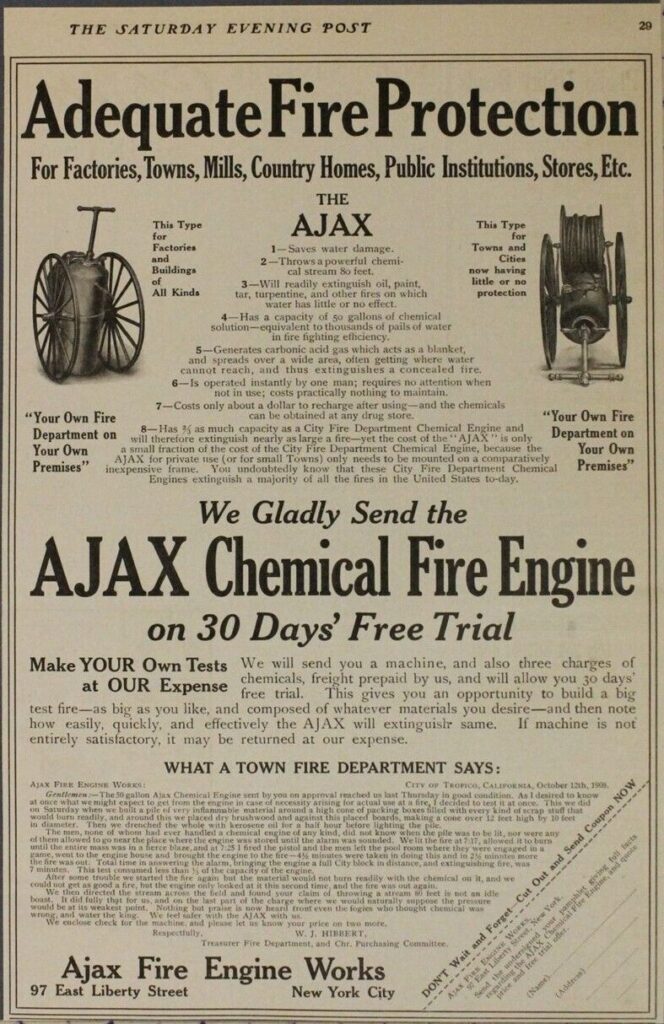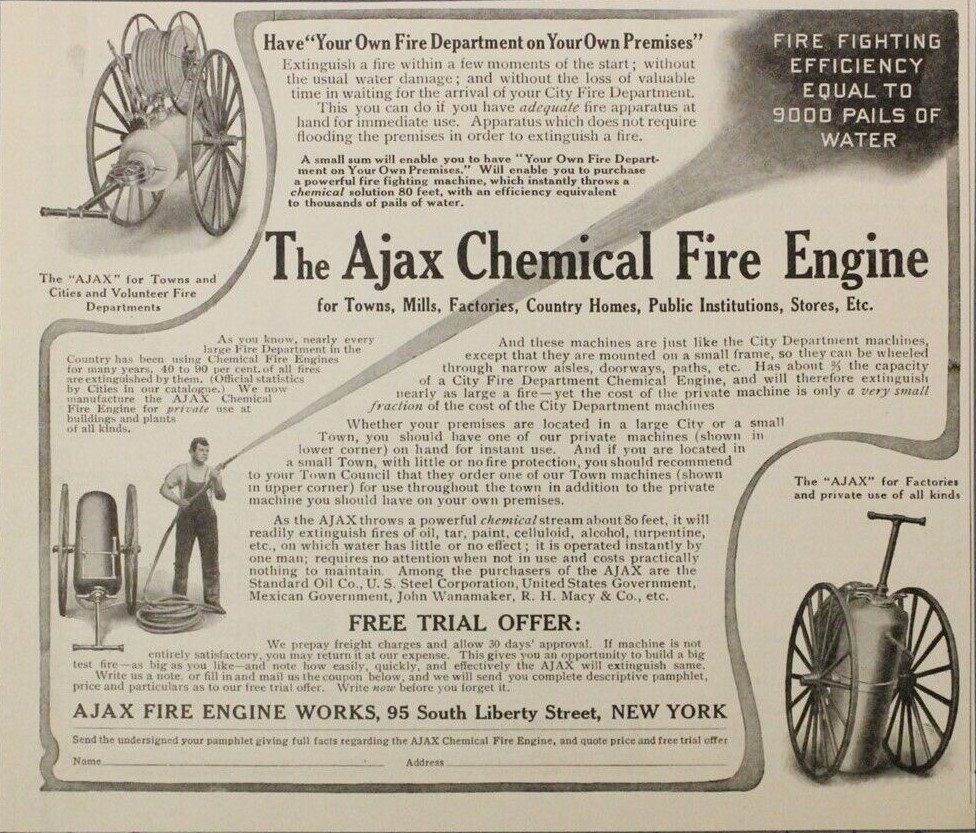
At around seven o’clock in the morning on August 25, 1909, the fire alarm in Brevard sounded, rousing the all-volunteer fire department, and probably the rest of town as well. In 1903, Fire Chief Breese had successfully lobbied the Board of Aldermen to build a tower for the fire alarm so that it could be clearly heard by everyone in the vicinity. Chief Breese had also instituted mandatory weekly trainings that year, and every Friday the fire company members reported at 4pm for practice. The men of the fire company did not receive any payment for this time commitment other than the standard poll tax exemption they were already receiving. The weekly trainings continued until April 1908, when Chief Orr raised the issue that it was not reasonable to require the men of the fire department to train once a week without being paid. The Aldermen opted not to pay the firemen, but instead to only require trainings once a month.
Also in April of 1908, the fire department received a trial chemical fire engine from Ajax Fire Engine Works in New York. Ajax was a prominent producer of chemical fire engines at this time and offered them to fire departments, factories, and companies for free trials. The engine was not a fire engine as we think of today, but rather a large tank on wheels with an attached hose, which the Sylvan Valley News described as “looking something like a piece of field artillery.” The tank was filled with water in which baking soda had been dissolved. Also in the tank there was a glass bottle filled with sulfuric acid which was secured upright. When used, firefighters would tilt the tank top down, which would cause a lead stopper to come away from the sulfuric acid reservoir, and the acid would mix into the water and baking soda. The chemical reaction resulted in carbonic acid gas as well as a rapid increase in pressure. The pressure was of course required to spray the mixture out of the hose in a stream with an 80-foot range, and the carbonic acid gas would smother fires quickly.

The Sylvan Valley News reported the fire department using the chemical engine following the trial period only twice before the August 1909 morning fire. In May 1909 it was used rather unsuccessfully on a barn fire, and then in June to extinguish a stack of drying roof shingles. In all likelihood it was put into use on more occasions, but they were not reported by the newspaper. On that August morning, at least five men responded to the alarm within minutes, wheeling the chemical fire engine to the site of the fire: Chief Galloway, C.B. Wilson, J.W. Smith, J.W. Chapman, and Jim Aiken. The fire was at Jim Axum’s house, who happened to be the cousin of Aiken, and was down the hill north of the courthouse. They arrived at the fire and Aiken began unwinding the hose when the chemical engine exploded. More precisely, as the firemen hurried down the hill with the engine, it tipped forward enough for the lead stopper in the sulfuric acid reservoir to come loose, and as it mixed with the baking soda water the pressure began building. As Aiken uncoiled the hose, the end of the cylinder blew off, throwing him “ten or twelve feet.” Chief Galloway, on the other end of the engine, was run over and injured, Chapman’s left leg was broken, and Wilson and Smith both received multiple cuts about the face and chest. Several other unnamed men were knocked down. Aiken was killed instantly, his neck broken, and one arm nearly severed.
Jim Aiken, many of you will know, was a well-respected and admired man in Transylvania County. He was the only African American member of the fire department at the time and a prominent business owner as well. His Main Street store was a combination general store, barber shop, and restaurant, and his advertisements in the Sylvan Valley News announced deals on everything from fur-trimmed hats, mason jars, and seed potatoes to Christmas specials on oysters. After his death, his wife continued to run the store for a time before moving to Ohio.
Ajax Fire Engine Works immediately sent one of their agents to investigate the accident, but the findings were never reported. There are newspaper accounts from all over the country between 1908 and 1910 of small towns and large cities alike purchasing Ajax chemical fire engines, but no other accounts of an explosion like Brevard experienced. It remains one of the worst accidents ever suffered in the history of the Brevard Fire Department.
Photographs and information for this column are provided by the Rowell Bosse North Carolina Room, Transylvania County Library. This article was written by Local History Associate Hale Durant. For more information, comments, or suggestions, contact NC Room staff at [email protected] or 828-884-1820.



